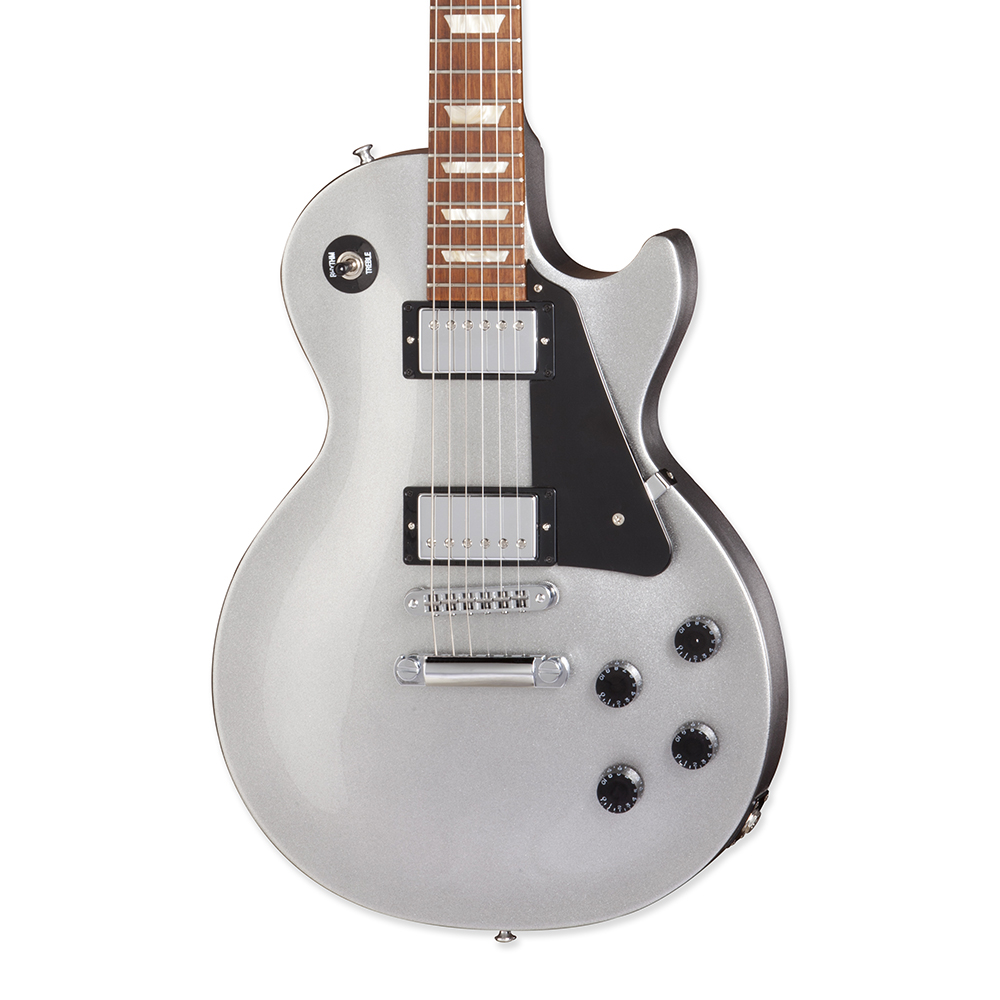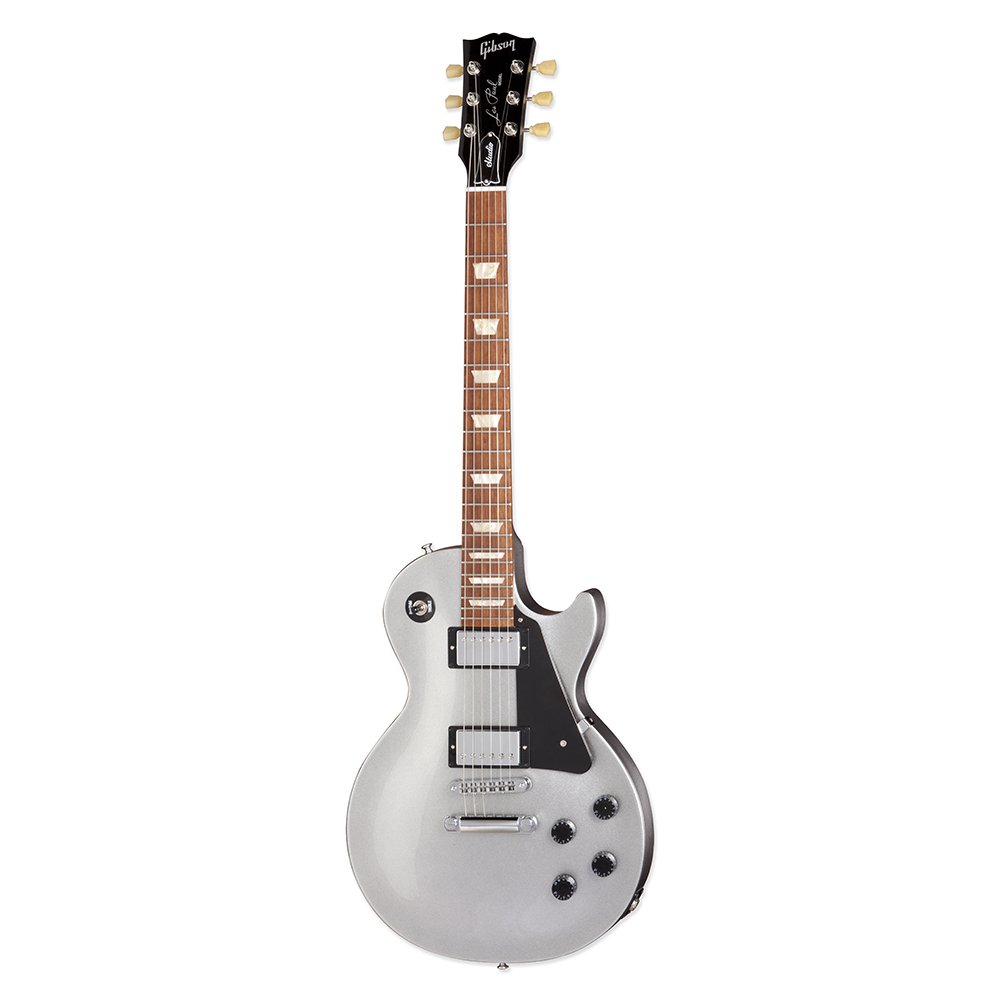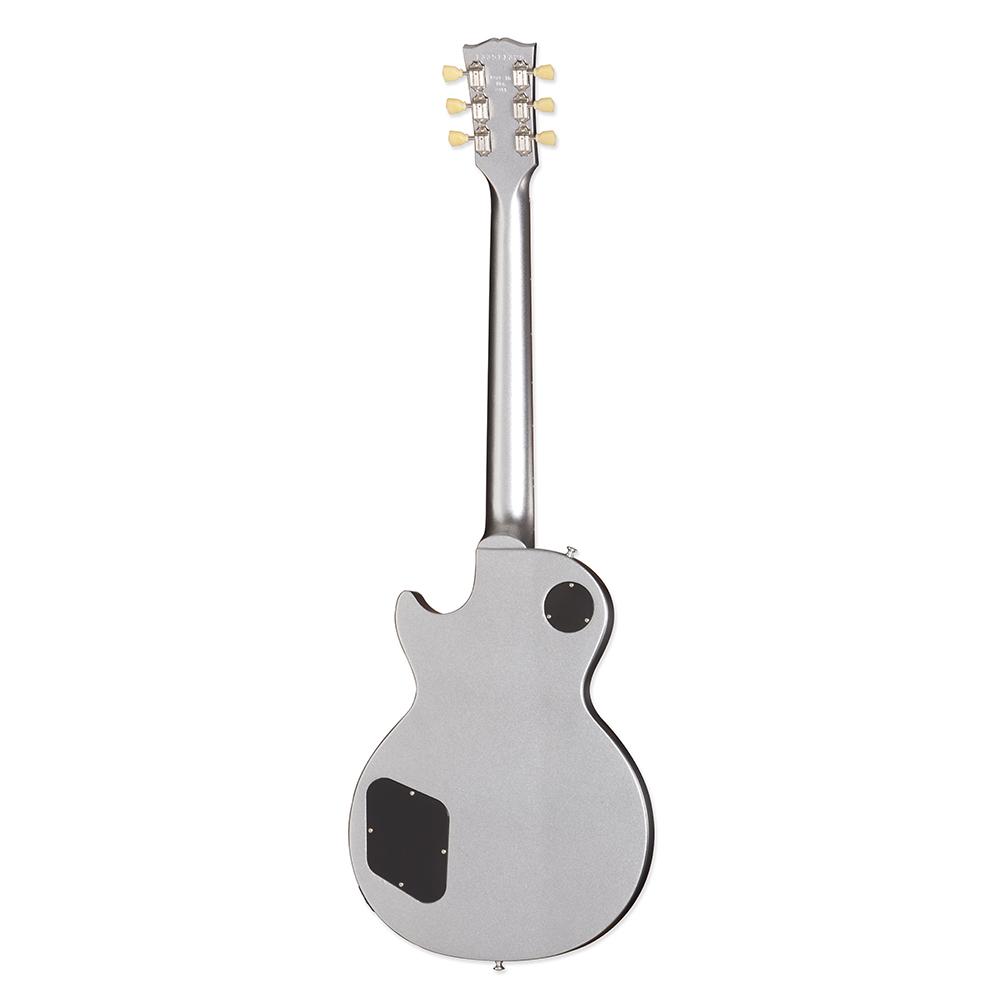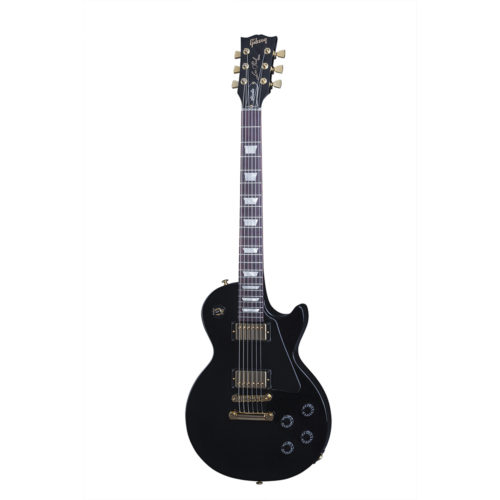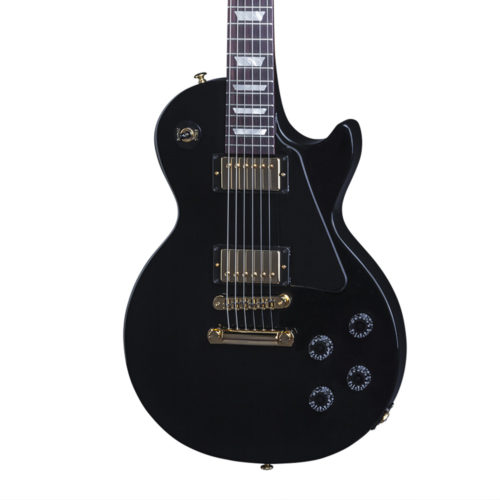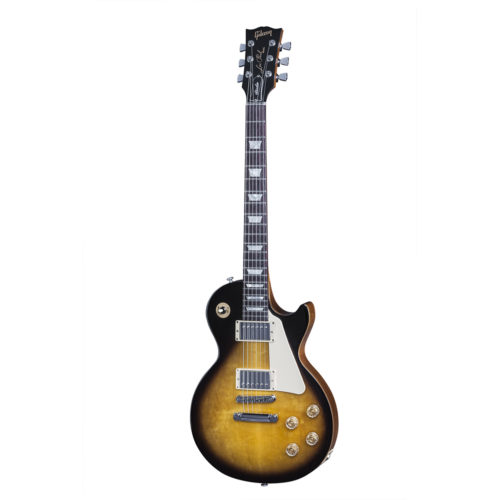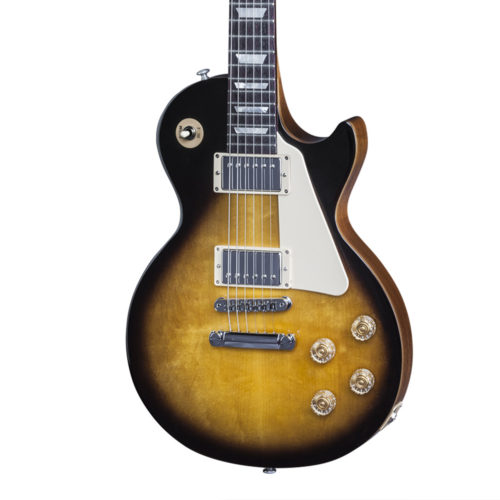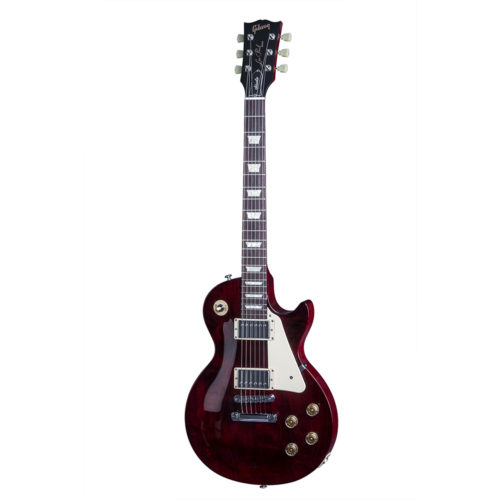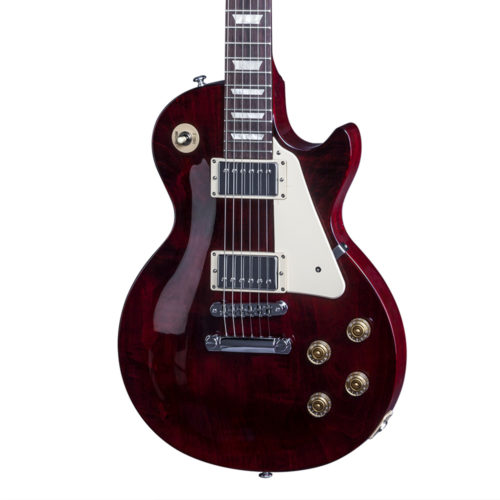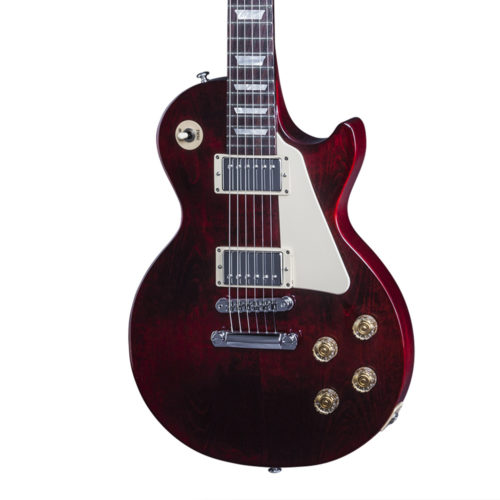Description
On this most recent iteration, however, the set quarter-sawn mahogany neck is capped with a 22-fret Granadillo fingerboard, inlayed with pearloid trapezoid markers, and carved in a slim ’60s profile. American guitar makers use Granadillo a lot more often these days, but it’s been a staple of by South American luthiery for centuries. It’s a denser material than rosewood, but resonates beautifully and has a bright tonality—which is why it’s a popular wood for instruments such as marimbas. Over time, it tends to darken to the shade of Honduran Rosewood.
More significantly from a tone-shaping perspective, Gibson eschewed standard volume pots on the new Studio for push-pull coil-tapping units that enable access to snappier tones. And while they were at it, Gibson also expanded the finish options by adding a few new vibrant editions, such as iverness green, radiant red and the pelham blue finish of our review guitar.
ABOUT GIBSON:
Orville Gibson founded the company in 1902 as “The Gibson Mandolin-Guitar Mfg. Co., Ltd.” in Kalamazoo, Michigan to make mandolin-family instruments. Gibson invented archtop guitars by constructing the same type of carved, arched tops used on violins. By the 1930s, the company was also making flattop acoustic guitars, as well as one of the first commercially available hollow-body electric guitars, used and popularized by Charlie Christian. www.gibson.com

